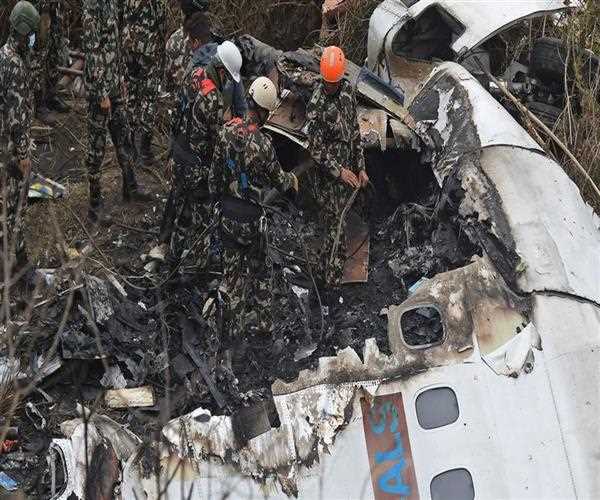Search here

23-Jan-2023
Nepal Plane Crash: In-Depth Analysis & Insights
Ground View
On March 12, 2020, a US-Bangla Airlines aircraft crashed near Tribhuvan International Airport in Nepal.
The flight had originated in Bangladesh and was en route to Kathmandu. The tragedy left no survivors, taking the lives of 51 passengers and 4 crew members.
In the wake of this tragic accident, it is important to examine what led to its occurrence and what lessons should be taken away from it.
In this view, we will explore the details of the Nepal plane crash and what it teaches us about aviation safety.
What caused the Nepal Place Crash?
The Nepal Place Crash was caused by a faulty signal box that was not properly maintained. The signal box directed the wrong signal to the cockpit, causing it to enter the wrong track and suddenly collapse.
Who is to blame for the Nepal Place Crash?
- The Nepal Place Crash was a devastating event that claimed the lives of many innocent people.
- The cause of the crash is still under investigation, but there are many theories about who or what is to blame. Some believe that the pilot made a mistake and flew into the mountain instead of over it.
- Others believe that the weather was to blame, as it was very foggy at the time of the crash.Still others believe that there was a problem with the plane itself, such as a mechanical failure.
- No matter who or what is ultimately found to be responsible for the Nepal Place Crash, it is clear that it was a tragic event that could have been avoided.
What could have been done to prevent the Nepal Place Crash?
- There are many ways that the Nepal Place Crash could have been prevented. The most obvious is to not have put the inexperienced pilot in charge of the flight. Another way would have been to have better communication between the air traffic controller and the pilot.
- The controller could have warned the pilot of the impending danger, and the pilot could have taken evasive action.
- In addition, the plane was not equipped with a black box, so investigators will never know what happened in the final moments before the crash.
- It is possible that if the plane had been equipped with a black box, investigators would have been able to determine what went wrong and prevent future crashes.
What can we learn from the Nepal Place Crash?
- When an earthquake struck Nepal on April 25, 2015, it caused a devastating avalanche on Mount Everest, killing at least 19 people and injuring many more.
- The Nepal Place Crash is a tragic reminder of the dangers of mountaineering and the importance of proper safety precautions.
There are many lessons that can be learned from the Nepal Place Crash.
- First and foremost, it is important to be aware of the potential hazards when undertaking any outdoor activity, especially in mountainous terrain.
- It is also important to have a comprehensive plan in place in case of an emergency, and to make sure that all members of your group are familiar with the plan.
- In addition, the Nepal Place Crash highlights the importance of being prepared for the worst.
- Even experienced climbers can be caught off guard by unexpected events, so it is crucial to always have the necessary supplies and equipment on hand.
- Finally, the tragedy serves as a reminder that Mother Nature is always ultimately in control, and that we must respect her power.
Last words, It's clear that the Nepal Place crash has its own lessons for us all. Firstly, it is a stark reminder of just how difficult flying in mountainous terrain can be and that safety protocols should always be respected and taken seriously. It also highlights the importance of communication between pilots and ground staff – something which was absent in this particular tragic incident. Finally, it serves as an important lesson on how crew resource management is essential when dealing with challenging situations such as these, as mistakes can cost lives.

SEO and Content Writer
I am Drishan vig. I used to write blogs, articles, and stories in a way that entices the audience. I assure you that consistency, style, and tone must be met while writing the content. Working with the clients like bfc, varthana, ITC hotels, indusind, mumpa, mollydolly etc. has made me realized that writing content is not enough but doing seo is the first thing for it.
Join Our Newsletter
Subscribe to our newsletter to receive emails about new views posts, releases and updates.
Copyright 2010 - 2025 MindStick Software Pvt. Ltd. All Rights Reserved Privacy Policy | Terms & Conditions | Cookie Policy